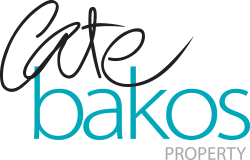That’s right…. some cashflow-neutral options (as pretty as they ain’t), are right here, under our noses in our very own city. Some are within the 7km radius.
So firstly, what does cashflow-neutral really mean?
When rent rolls in and expenses are drawn out, the net differential for a cash-flow neutral property is close to zero. The expenses, (or outgoings) include five things;
- mortgage repayments,
- insurances,
- rates and taxes (land tax if applicable),
- property management fees, and
- maintenance costs
All of these will vary pending the location, condition, dwelling type and coverage of any strata management. If, for example the property is a unit within a complex and the strata management includes gardening and detailed maintenance, the contributions could be higher.
In this lending climate that is offering incentives (or limited choices) for investors in relation to principle and interest repayments vs interest-only repayments, the outgoings will be increased if the investor is paying the principle component of their loan down too. All of these outgoings need to be provisioned for when calculating the cashflow, including buffers for surprise, larger-ticket maintenance items (such as hot water services or roof replacement), and coverage for any vacancy periods.
With interest rates at historical low’s, a gross rental return above 5% can start to look quite attractive to a cashflow-sensitive investor who still wants the satisfaction of selecting a property that will deliver some capital growth over the long-term, also.
The calculation for gross rental return is easy, but the critical consideration relates to understanding all of the likely outgoings.

Many investors have been flocking to our Victorian regions in the quest for balanced cashflow and capital growth, and the performance of our regions has been stellar in the face of Melbourne’s miserable year. But the recent growth trajectory delivered in Ballarat, Bendigo and Geelong is not sustainable long-term at these same levels.
The regions have every reason to continue performing, but not at these heightened, record-breaking levels.
As our capital city rebounds, we can anticipate an out-performance when compared to the capital growth projected for the regions long-term.
Focusing on the dwelling types, the infrastructure supporting our inner and middle-ring suburbs, and the ease in which buyers can obtain finance for lower-priced stock, it is of no surprise that the performance of units in the inner-15km radius has been less volatile. This chart, albeit seven months’ old, illustrates the performance of Melbourne’s house and unit price declines in the various pockets around our city. It is evident that units have fared better than houses, and this is due to the lending constraints for borrowers looking to take on a higher priced purchase. Tougher lending scrutiny and tighter loan servicing calculators have impacted our market severely, while first home buyers have enjoyed taking the place of investors in the updated pie-chart of buyers.
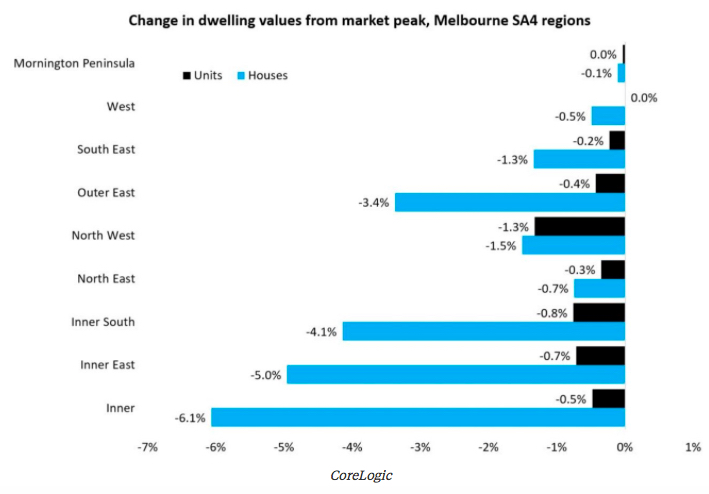
The obvious question is – where can a Melbourne investor find 5%+ gross rental returns?
They just have to look. And they have to remind themselves that they aren’t meant to love the property, or aspire to live in it. The asset only needs to do these four things;
- Meet the yield requirement that the investor needs to manage (for many, this is cashflow-neutral)
- Deliver some long-term growth
- Exhibit tight vacancy rates
- Not give them headaches (ie. bad tenants or high maintenance bills)
Looking through the auction results this weekend was interesting. This two bedroom, boutique block in Footscray caught my eye. Ugly? yes. Headache factor? Possibly. This one may need heavier duty pain relief than Panadol… maybe Maxigesic. But with a firm property manager and careful tenant-selection, it may not need headache relief at all.
Yield? absolutely. This property sold in the past few days for $268,000. Others in the same street in comparable blocks are renting for $300pw.
Even if requiring a clean up, a gross rental yield of 5.8% within 7km of Melbourne’s CBD, alongside convenient tram routes represents a good yield by anyone’s measure.
What I love about this property is the potential for capital growth ‘drag-up’ longer term. Footscray is littered with cranes, development scaffolding and road closures while new towers are all going in. The new 2BR units in developments are selling for considerably more than double this price and the land values are soaring as this ugly-duckling suburb shakes it’s stigma and rises to the challenge of the State Government 2030 plans.
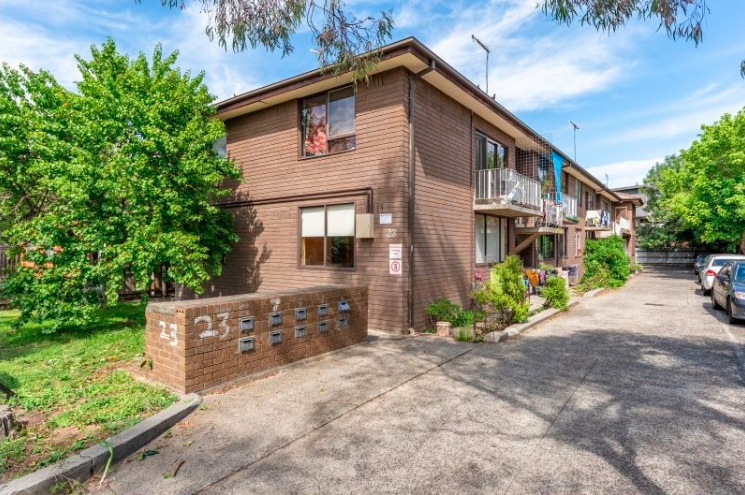
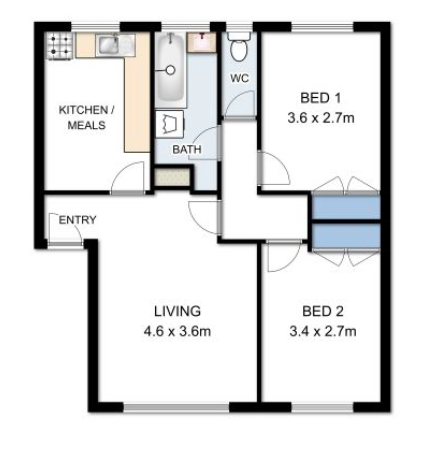
For those locals who still can’t bear the thought of Foot-scary, leave it to the Sydney-siders who know an interesting investment set of metrics when they see one, and nervous Melburnian investors could perhaps consider a tidy villa unit like this one in Lalor.
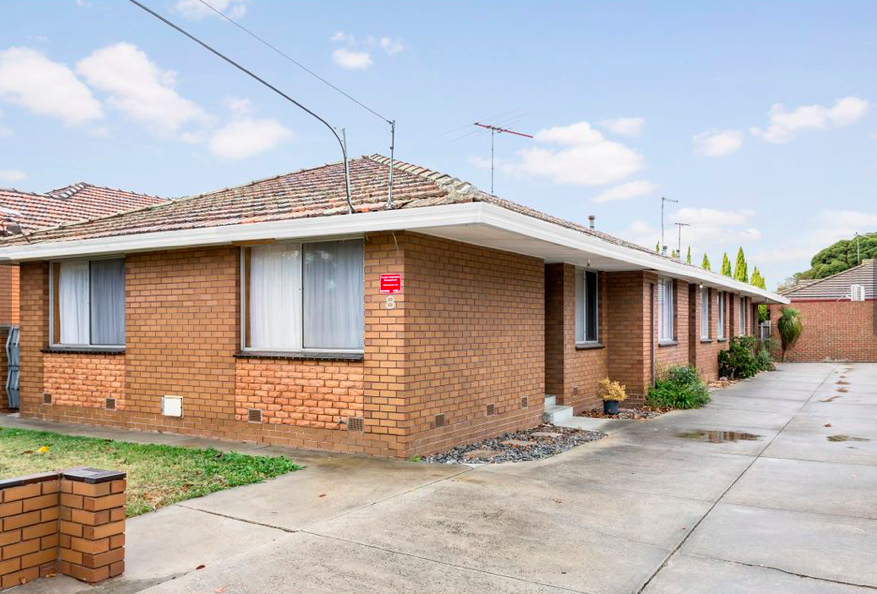
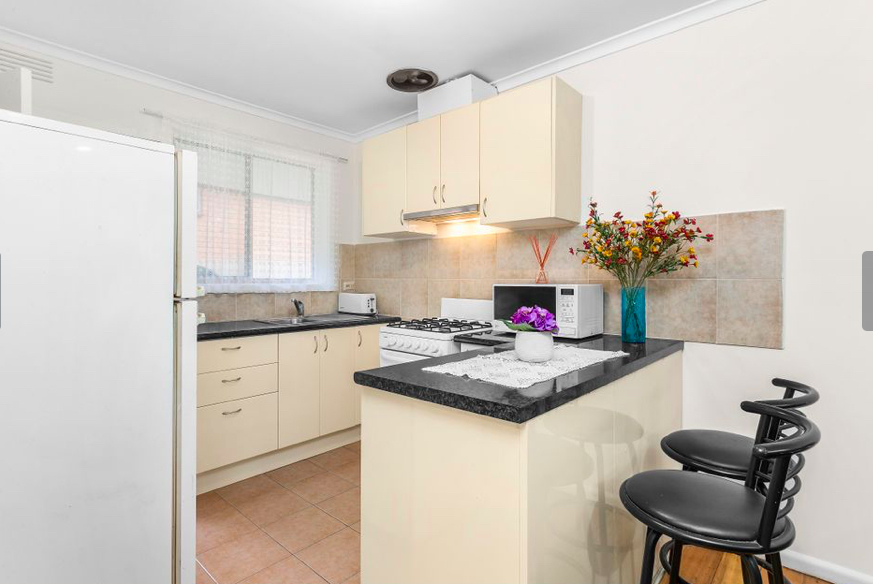
Above the ring road, nestled between Thomastown and Mill Park, this established suburb offers rail, easy commute around the city, and represents value for those who have been priced out of Reservoir. Popular with first home buyers (and for good reason), Lalor offers some great buying for those with a sub-$300,000 budget. But it also offers great yields. This property could fetch between $280-300pw and sold recently for just $287,000.
A 5.2% gross rental yield for a villa in a sound metro area is impressive for any Melbourne investor.
And for those who are keen to capitalise on the opportunity to enter a gentrifying market within the 13km radius, Sunshine and Albion don’t disappoint when it comes to yield, and the added bonus of long term capital growth stands many investors in good stead, despite the need for a good supply of Panadol. A read of some of Sunshine’s future infrastructure and local government planning, combined with our State Government recent announcements for airport links provides some interesting food for thought.
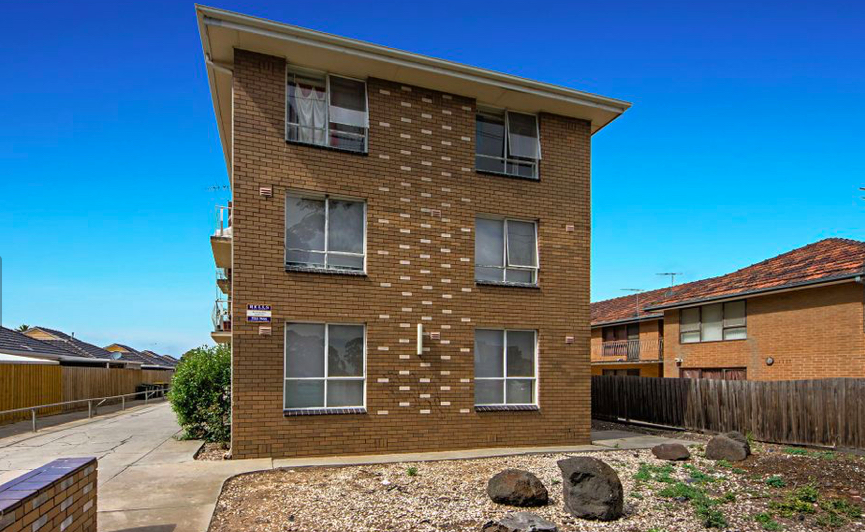
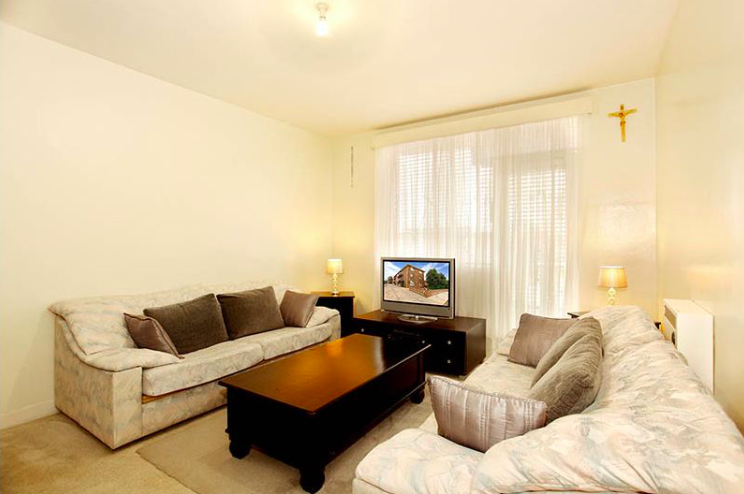
This dull looking boutique block in adjoining Albion is an easy walk to station, shops and park. Just seven stops to the train to Southern Cross, the $270,000 price tag and $300pw likely rental seems pretty attractive on paper. I can only imagine what an upgrade one day in the future could mean for it; render, nice fencing, some greenery and an internal upgrade will no doubt meet the needs of the gentrifying crowd taking this pocket by storm in the face of affordability constraints in Yarraville, Seddon and the like.
There is no doubt that our recent downturn has paved the way to some opportunistic buys, but combining our heightened demand for housing, particularly in the western suburbs, the desire for living closer to the CBD, the increasing population forecast for our city, and the government announcements in relation to infrastructure and spending suggests that we shouldn’t let stigma get in the way of a good business decision.
I do stress this point though: The need for a great property manager is paramount for any investor who targets gentrifying areas with an interesting tenant demographic.
